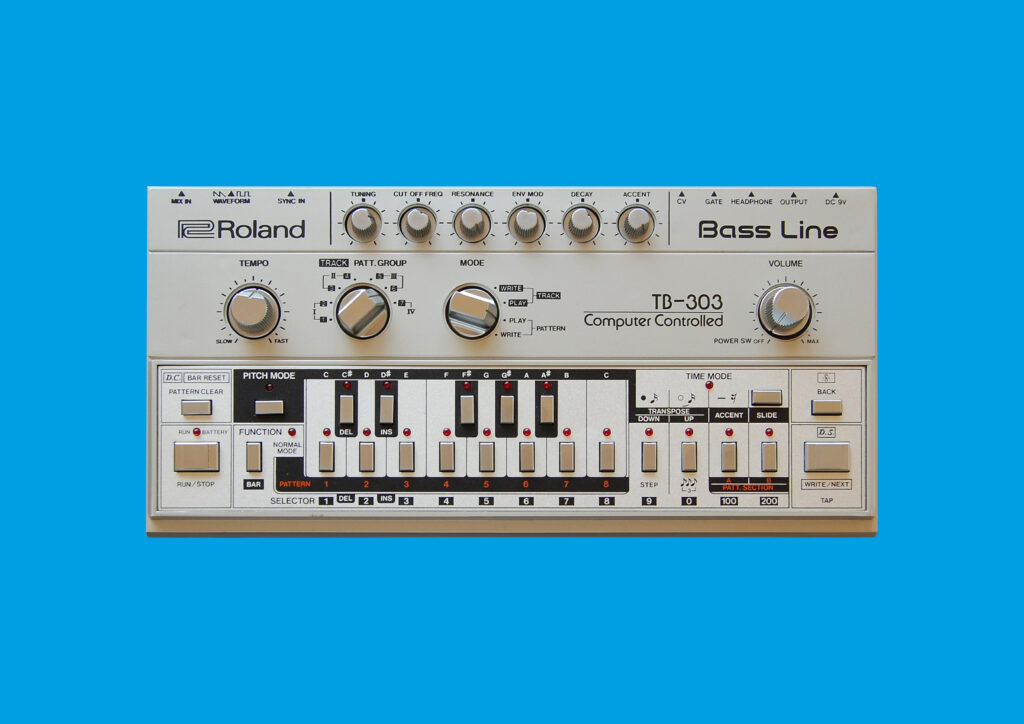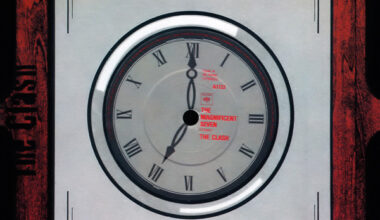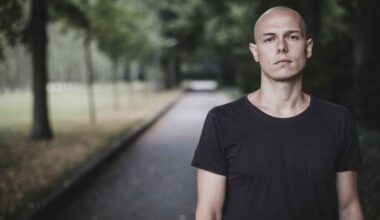Freewheeling through time and space, Kris Needs continues his adventures in sound. This month: The Roland TB-303

Forty years ago, an electronic revolution was invading US hip hop and crystallising the post-disco electro-boogie that paved the way for house music’s first primitive dispatches. My flatmate Youth and I felt shockwaves every time a cassette capturing the latest epoch-making New York radio mastermix winged its way to the bass-bins blasting our front room, making us sit in open-mouthed awe, scattering sausages everywhere.
Obviously, much of this startling analogue trailblazing has long been part of the electronic fabric. In 1983, though, these audacious sonic bulletins from NY’s teeming club scene were writing the future, whether Run-DMC stripping hip hop to its Roland 808 jockey shorts on ‘Sucker MCs’, Cold Crush reflecting the rampant creative crossover gripping the city on ‘Punk Rock Rap’ or Shannon’s ‘Let The Music Play’ mating Latin freestyle and electro-boogie using the exiled Roland TB-303.
Designed as a bass tool for solo musicians and unleashed in ’82, the Transistor Bassline-303 flopped after its alien groove globules confused musicians. Its manufacture ceased after two years, but the damage done by the 10 to 20 machines that went out was immeasurable, starting with ‘Let The Music Play’ demolishing the disco backlash, kickstarting the freestyle movement and constructing a bridge between electro-boogie and acid house as it topped club charts and reached the US Top 10.
Needing vocals for a Latin-electro instrumental, production duo Chris Barbosa and Mark Liggett had recruited Washington-born college student and New York Jazz Ensemble singer Brenda Shannon Greene, whose creamy vocals saluting the dancefloor over chomping 303 and glistening synth cascades ruled the radio and clubs from Danceteria to bombed-out after hours, when I visited NY for the first time in ’83.
Such an unpredictably anarchic instrument was made for the unbridled mayhem at Ron Hardy’s Music Box in Chicago – the birthplace of acid house madness that also opened 40 years ago. After Phuture’s ‘Acid Tracks’ ravaged the UK, the 303’s otherworldly frogs’ bollock squelch was implanted for life in certain devotees, including Nina Walsh and Andrew Weatherall.
Nina honours the 303’s 40th on volume three of her ‘Apparently Solo’ archive series, with 2016’s ‘Yacidik’, a lysergic glowworm’s love truncheon of floor-frying bliss, hot-wired by churning acid mayhem. Meanwhile, ‘Alma’, composed in 2018 for Mr Weatherall’s reading from Gordon Burn’s 1991 novel ‘Alma Cogan’ at the Durham Literary Festival, simply carries the most exquisitely beautiful melody she’s ever written over 13 time-stopping minutes.
Check out our new podcast, Into The Cosmic Hutch, on YouTube.





